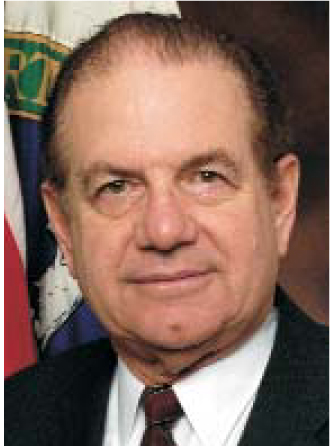Hopes dim for DOE science budget reprieve
DOI: 10.1063/1.2897942
As the Bush administration sent its final-year budget proposal to Congress, advocates for the physical sciences were still hopeful that lawmakers might restore most of the last-minute cuts they took from current-year Department of Energy science programs.
Raymond Orbach, DOE undersecretary for science, told reporters that “a presidential decision” will determine whether additional funding for DOE’s Office of Science will be included in a supplemental appropriations measure the White House will send to Capitol Hill sometime in the coming weeks. Such requests are supposed to cover emergency spending only—in this case, military operations in Iraq—though members of Congress in the past have attached nonemergency riders to the must-pass bill.
Orbach and White House science adviser John Marburger unveiled President Bush’s budget request for fiscal year 2009 on 4 February. As they did so, they sought to dampen expectations that Congress will provide additional spending in the current year to either the Office of Science or to NIST and NSF, the other two agencies that were supposed to receive sizable increases under the American Competitiveness Initiative (see Physics Today, January 2007, page 30
Despite Orbach’s and Marburger’s public statements, there were signs that DOE has been working behind the scenes to restore $300 million of the $500 million cut appropriators made to the Office of Science’s FY 2008 administration request in December. A three-page document obtained by Physics Today details how the department would dole out such a supplement. The plan would devote $110 million to ITER, the full amount that lawmakers cut from the US contribution to the multinational fusion project; spread $97 million among the national laboratories to increase running time for their synchrotrons, neutron sources, and other user facilities; provide $69 million to high-energy physics programs to avoid layoffs and furloughs and restore experimental programs at Fermilab and SLAC; and add back $23 million to nuclear physics programs. Asked about the plan, Orbach said it had been prepared at the request of certain lawmakers to show the impact of the reductions.
Marburger told reporters that more than half of the fiscal year will have gone by before a supplemental spending measure can be enacted, and he said the “relatively benign treatment” that science and technology programs overall received in FY 2008 makes it doubtful appropriators would see fit to provide more money. At a meeting of university research administrators, he said both the administration and Congress are “afraid” to open the supplemental appropriations to nonemergencies for fear of opening the floodgates to requests from other constituencies that felt shortchanged.
Orbach said he would welcome supplemental funding but noted, “We have to deal with realities.” Over the past two years, $800 million that had been sought by the administration for the Office of Science “has been lost to science forever,” he lamented, adding that he hopes to avoid a “threepeat” next year. Because it was prepared under the assumption that the FY 2008 request would be enacted, the FY 2009 submission calls for what Orbach admitted “looks like a huge increase” of 19% for his programs. That will be a tempting target for appropriators.
DOE regards itself to be “in arrears” on the ITER project, Orbach said, noting that under an agreement with partner nations, the US is prohibited from backing out of the project during the 10-year construction phase. The department hopes the shortfall can be recouped over the coming years, he said, although the $214.5 million requested for ITER next year is insufficient to pay off the past-due balance.
Orbach offered reassurances to the Fermilab-based International Linear Collider R&D effort, whose funding Congress slashed from $60 million to $15 million this year, effectively shutting down the program. DOE is requesting $35 million for an ILC program of “reduced scope,” plus $25 million for development work on superconducting cavities that must be completed before ILC construction. DOE is elevating the ILC’s status by bringing it within the structured review process the department uses for all major new facilities. But the desired energy range for the ILC won’t become evident before some experimental results from Europe’s Large Hadron Collider are available, probably in 2010, he said. DOE won’t decide whether to take the next step on the ILC until then.

Orbach

More about the Authors
David Kramer. dkramer@aip.org
